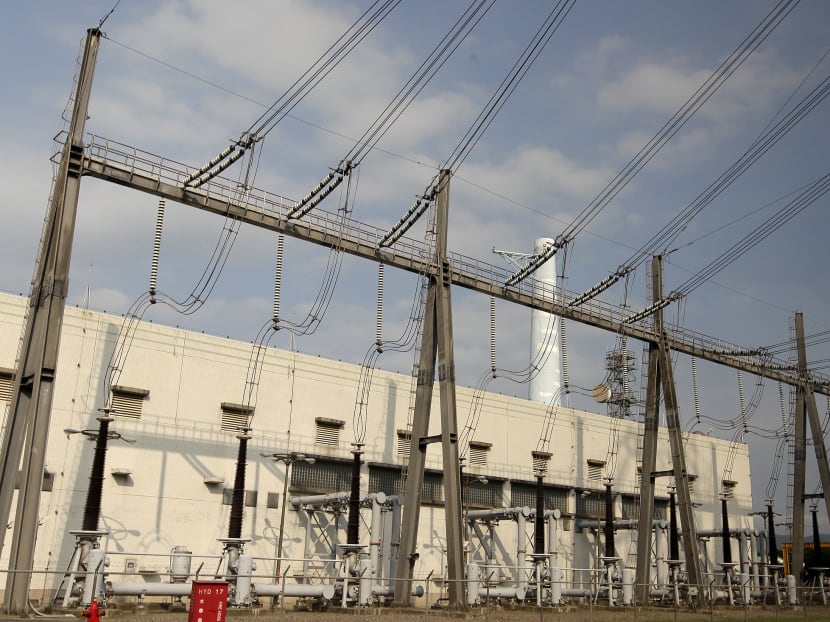Taipei green shift defies energy security fears
TAIPEI — Taiwan is forging ahead with an ambitious plan to revamp its electricity mix despite fears about energy security, as pressure builds on the government to tackle worsening air pollution.

A generator facility is seen at yet-to-be-completed Taipower Fourth Nuclear Power Plant in Gongliao, New Taipei City. The Taiwanese government aims to lift renewables’ share of Taiwan’s power mix from 6 per cent to 20 per cent over the next seven years via construction of offshore wind farms and solar installations, and to reduce carbon emissions to 20 per cent of 2005 levels by 2030. Photo: Reuters
TAIPEI — Taiwan is forging ahead with an ambitious plan to revamp its electricity mix despite fears about energy security, as pressure builds on the government to tackle worsening air pollution.
The government has faced growing calls to tackle the toxic smog that blights many parts of Taiwan — thousands took to the streets last month to protest against coal-fired power.
President Tsai Ing-wen and her Democratic Progressive party are pushing ahead with a proposal to cut coal use and boost renewable generation.
But cost uncertainties, Taiwan’s acute energy supply problems and a pledge to phase out nuclear power on the earthquake-prone island threaten to complicate the plan.
“We do see it as ambitious,” said Jennifer Morgan, Greenpeace executive director. “It is pretty unique that they are trying to deal with both [nuclear and climate change risks] at the same time.”
The government aims to lift renewables’ share of Taiwan’s power mix from 6 per cent to 20 per cent over the next seven years via construction of offshore wind farms and solar installations, and to reduce carbon emissions to 20 per cent of 2005 levels by 2030.
The plan may boost the attractiveness of the high-tech manufacturers that supply tech giants such as Apple and drive Taiwan’s economy — Apple is looking to prioritise partners that act to reduce their impact on climate change.
But the speed of the transition threatens energy security in an already fragile power system.
“Everyone has concern, not only the chipmakers,” said the Taiwan Semiconductor Industry Association. “We need a stable power supply.”
A power outage in August hit millions across Taiwan, prompting the resignation of Lee Chih-kung as economic affairs minister. Now authorities are rushing to build new wind and solar capacity while installing a suite of new gas-fired turbines and LNG import terminals, which will be critical in cutting the use of coal.
Taiwan Semiconductor Manufacturing Co, the sole supplier of chips for Apple’s latest iPhones and one of Taiwan’s largest energy users, is set to build a US$20 billion (S$26.6 billion) facility in Tainan and notes that the government has made “clear commitments” to resolve the country’s electricity issues.
Officials say a delay on a single project could derail the entire plan and increase the likelihood of further blackouts.
“This is a very tight schedule,” said Taipower, the state-owned utility.
The government has also committed to ban the sale of fossil fuel-powered motorcycles and cars by 2035 and 2040 respectively, which will put more pressure on electricity demand as consumers switch to electric vehicles.
Frequent typhoons in summer, the risk of earthquakes, and rough seas and strong winds throughout winter mean wind power engineers are encountering challenges “that have not been faced anywhere in the world”, said Thomas Probst, a project manager with Danish engineering consultancy Niras, which is advising Taipower on the offshore projects.
Developers are confident the plan can be realised and international companies are flocking to Taiwan to bid for new projects after legislation was passed to end Taipower’s monopoly by opening renewable projects to private companies.
“There is a very good wind resource in this region and the government is pushing this industry, giving some very favourable feed-in-tariffs for the developers,” said Mr Probst.
“It seems very likely that a large capacity will be installed between 2020 and 2025.”
There are, however, also questions about future power price increases. Early estimates put the investment in wind power, alone, at US$19.2 billion, but government agencies remain unclear on the total costs of the transition. THE FINANCIAL TIMES






